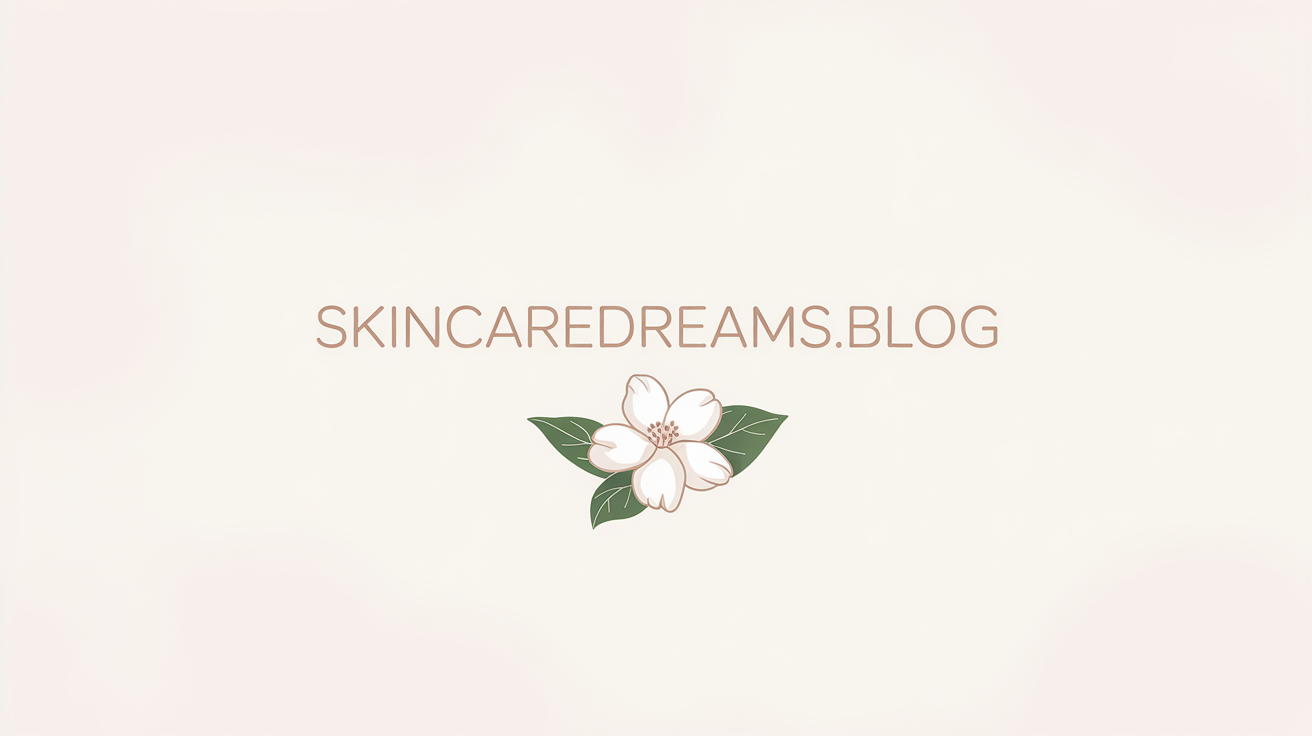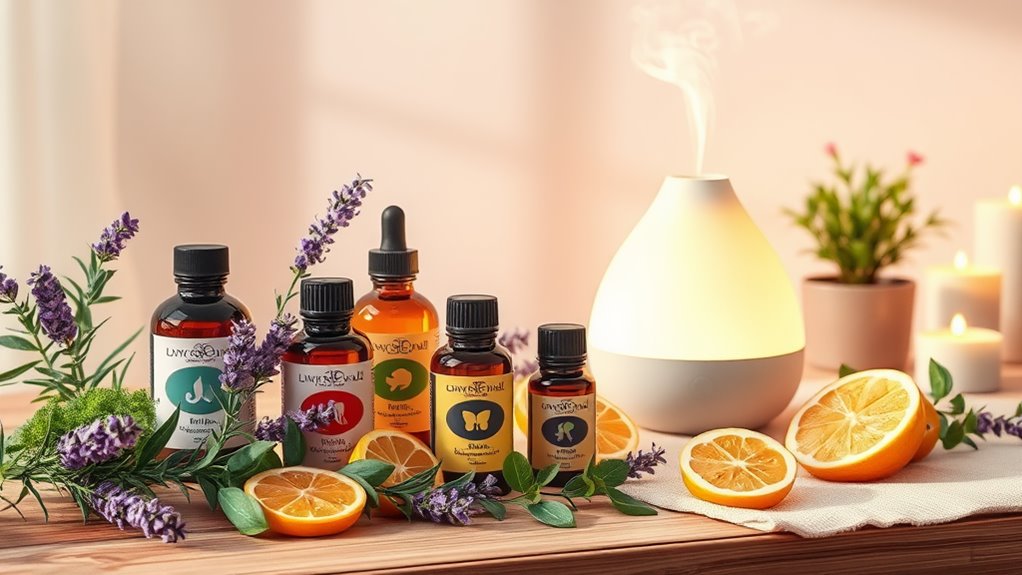How to Use Essential Oils for That Natural Glow
If you’re looking to achieve a natural glow, essential oils could be your go-to solution. These oils offer a range of benefits for skin health, but using them correctly is key. You’ll want to know which oils are best suited for your skin type and how to apply them safely. Plus, there are simple DIY recipes that can enhance your skincare routine. Curious about the best oils to start with?
Key Takeaways
- Dilute essential oils with a carrier oil, using 2-3 drops per teaspoon, to avoid skin irritation while enhancing glow.
- Apply rejuvenating blends, such as lavender and tea tree oil, to soothe and heal skin while promoting a radiant complexion.
- Incorporate a revitalizing facial mist made of distilled water and tea tree oil to refresh and hydrate your skin throughout the day.
- Experiment with DIY recipes like a soothing clay mask using rose oil to nourish and balance your skin’s tone and texture.
- Monitor skin responses and adjust oil combinations to find the perfect blend that enhances your natural glow effectively.
Top Essential Oils for Radiant Skin
When it comes to achieving radiant skin, a few essential oils can make all the difference. Incorporating essential oils for skin into your routine can elevate your skincare game.
Lavender oil, with its calming properties, soothes irritation and promotes healing. Tea tree oil works wonders for acne-prone skin, offering antibacterial benefits while reducing inflammation. Frankincense oil not only rejuvenates but also helps diminish the appearance of scars and wrinkles.
For hydration, you can’t go wrong with rose oil; it nourishes while providing a luxurious scent. Finally, consider adding geranium oil to balance oil production and enhance your skin’s overall tone.
Benefits of Essential Oils for Skincare
Original oils offer a multitude of benefits for skincare, enhancing your routine with their natural properties. They provide powerful antioxidants that combat free radicals, promoting youthful skin.
The anti-inflammatory properties of many original oils can soothe irritation and redness, making them ideal for sensitive skin. Original oils also possess antimicrobial qualities, helping to prevent acne and balance oily skin.
When you incorporate these oils, you’re not just nourishing your skin; you’re also engaging your senses with their aromatic scents, which can elevate your mood.
Additionally, certain oils, like lavender and tea tree, aid in healing and rejuvenation, allowing you to achieve a healthier complexion.
Embrace these benefits, and watch your skin transform into a radiant reflection of your inner liveliness.
How to Properly Apply Essential Oils
When using essential oils for your skincare routine, proper application is key.
You’ll want to understand dilution techniques to avoid irritation and choose the best application methods for your skin type.
Let’s explore how to safely incorporate these oils into your daily regimen.
Dilution Techniques Explained
How can you guarantee that your essential oils are safe and effective for your skin? The key lies in proper dilution.
Essential oils are potent and can cause irritation if used undiluted. Start with a carrier oil, like jojoba or sweet almond, to create a safe blend. A common dilution ratio is 2-3 drops of essential oil per teaspoon of carrier oil for facial use.
For larger areas, you can increase the ratio to 5-10 drops per ounce. Always conduct a patch test on a small skin area before full application.
This confirms you can enjoy the benefits of your essential oils without adverse reactions, allowing you to achieve that natural glow confidently and safely.
Application Methods Overview
Now that you’ve learned the importance of proper dilution, it’s time to explore the best ways to apply essential oils for maximum benefits.
There are several effective methods to evaluate. For topical application, use a rollerball or your fingertips to massage the oil into your skin, focusing on areas needing extra care.
Diffusing essential oils in your living space allows you to enjoy their aromatic benefits while promoting relaxation.
For a more direct approach, add a few drops to your bath or mix them into your moisturizer.
Always remember to perform a patch test before using any new oil on your skin to prevent irritation.
Safety Considerations When Using Essential Oils
Although essential oils can enhance your natural glow, it’s crucial to prioritize safety to avoid potential irritation or adverse reactions.
Here are key considerations to keep in mind when using these potent oils:
-
Dilution: Always dilute essential oils with a carrier oil to minimize skin irritation.
-
Patch Test: Conduct a patch test on a small skin area to check for adverse reactions.
-
Quality: Use high-quality, pure essential oils from reputable sources to guarantee safety and efficacy.
-
Contraindications: Be aware of any personal allergies, skin sensitivities, or medical conditions that may interact negatively with specific oils.
-
Consultation: If you’re pregnant, nursing, or have health concerns, consult a healthcare professional before use.
Taking these precautions will help you safely enjoy the benefits of essential oils.
DIY Facial Recipes With Essential Oils
If you’re looking to elevate your skincare routine, DIY facial recipes incorporating essential oils can be a game-changer.
Start with a rejuvenating facial oil by mixing three drops of lavender essential oil with two tablespoons of jojoba oil. This blend hydrates while calming your skin.
For a revitalizing facial mist, combine one cup of distilled water with five drops of tea tree oil in a spray bottle. Shake well and spritz on your face to combat breakouts.
Alternatively, whip up a soothing clay mask by mixing bentonite clay with a few drops of rose essential oil and enough water to form a paste. Apply it weekly for a radiant complexion. Incorporating scientifically-proven methods can enhance the effectiveness of your skincare routine.
Experiment with these recipes and adapt them to suit your skin’s unique needs.
Incorporating Essential Oils Into Your Skincare Routine
To achieve a natural glow, choosing the right essential oils for your skin type is essential.
You’ll also want to master application techniques to maximize their benefits.
Let’s explore how to seamlessly incorporate these oils into your daily routine.
Choosing the Right Oils
When it comes to incorporating essential oils into your skincare routine, choosing the right oils is crucial for achieving that natural glow. The selection process hinges on your skin type and specific concerns.
Here are some oils to contemplate:
-
Lavender: Known for its calming properties, it soothes irritation and promotes relaxation.
-
Tea Tree: A powerhouse for acne-prone skin, it combats blemishes with its antibacterial properties.
-
Rosehip: Rich in vitamins A and C, it helps reduce scars and evens skin tone.
-
Frankincense: This oil rejuvenates skin and minimizes the appearance of fine lines.
-
Geranium: Balances oil production and enhances skin elasticity.
Application Techniques Explained
Now that you’ve selected the right oils for your skin, understanding how to apply them effectively is essential to revealing their full potential.
Start by mixing a few drops of your essential oil with a carrier oil, like jojoba or sweet almond, to prevent irritation. For targeted treatment, apply the mixture directly to problem areas, using your fingertips to gently massage it in.
If you’re incorporating oils into your moisturizer, blend them in your palm before applying the cream to your face. Always patch-test new combinations on a small area first.
Finally, consider using essential oils in a steam treatment or facial mist for a revitalizing boost. Consistency is vital; make this a daily ritual for best results.
Essential Oil Blends for Different Skin Types
Finding the right essential oil blend for your skin type can transform your skincare routine and enhance your natural glow.
By tailoring your oils to your unique needs, you can achieve ideal results. Here are some effective blends for different skin types:
-
Oily Skin: Tea tree and bergamot to balance oil production.
-
Dry Skin: Frankincense and sandalwood for deep hydration.
-
Sensitive Skin: Lavender and chamomile to soothe irritation.
-
Combination Skin: Geranium and lime for balanced nourishment.
-
Aging Skin: Rose and myrrh to promote elasticity and reduce wrinkles.
Incorporating essential oils into your routine can help stop aging skin by encouraging better skin health and vitality.
Experiment with these blends and observe how your skin responds.
Mastering these combinations can elevate your skincare game and reveal a radiant complexion.
Tips for Storing and Preserving Essential Oils
Properly storing and preserving your essential oils is crucial for maintaining their potency and effectiveness. To guarantee longevity, follow these essential tips:
| Tip | Description |
|---|---|
| Store in Dark Bottles | Protects oils from light degradation. |
| Keep Cool | Maintain a temperature between 60-70°F (15-21°C). |
| Avoid Humidity | Store in a dry place to prevent moisture exposure. |
| Seal Tightly | Confirm caps are secure to prevent oxidation. |
Frequently Asked Questions
Can Essential Oils Expire or Lose Potency Over Time?
Yes, essential oils can expire or lose potency over time. You should store them in cool, dark places and check for changes in scent or consistency. Regularly replacing oils guarantees you maintain their effectiveness and benefits.
How Can I Determine My Skin Type for Essential Oils?
To determine your skin type, observe how your skin feels throughout the day. If it’s oily, dry, or combination, you’ll know which essential oils will work best. Conduct a patch test for specific sensitivities too.
Are Essential Oils Safe for Children and Pregnant Women?
Essential oils can be safe for children and pregnant women, but you should always consult a healthcare professional first. They’ll guide you on which oils are appropriate and safe for specific situations and conditions.
What Storage Conditions Are Best for Essential Oils?
To preserve essential oils’ potency, store them in dark glass bottles, away from sunlight and heat. Keep them in a cool, dry place. Proper storage guarantees their longevity and effectiveness for your practices and blends.
Can I Mix Different Essential Oils Together for Skincare?
Yes, you can mix different essential oils for skincare. Just make sure they’re compatible and suitable for your skin type. Experiment with ratios, but start small to avoid irritation and achieve your desired results effectively.
Conclusion
Incorporating essential oils into your skincare routine can transform your skin, giving it that coveted natural glow. By choosing the right oils and applying them correctly, you’ll enhance your complexion while enjoying their aromatic benefits. Always remember to prioritize safety and perform patch tests to avoid irritation. With a little creativity and care, you can create DIY blends tailored to your skin’s needs. Embrace the power of essential oils and enjoy the radiance they bring to your skin!





